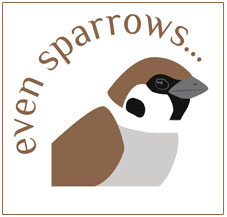

WATCHING SEABIRDS
Posted: 12.07.24 in Articles category
July can be the best of months for watching seabirds in the UK and two contrasting personal experiences come readily to mind. On the one hand, there's the enlivening experience of being in a seabird colony - all sound, colour, activity and even smell! On the other, there's the sea-watching vigil sitting on a coastal promontory for several hours looking out to sea through a telescope in the hope that some unusual ocean-faring bird will fly by. Elation if it does or shoulder shrugging resignation when it doesn't.
A few days ago I spent 2 hours in vain staring out to sea waiting for a Cory's Shearwater, reportedly flying northwards along the Yorkshire coast and less than a kilometre from land. These days such a bird might be tracked along its journey by a string of birdwatchers who note the times it flies between 2 headlands and calculate how long it may take to arrive and fly past their respective vantage points. I was waiting with 3 other local birdwatchers for either one of two reported shearwaters - the first due past at 4.40pm and the other at around 6pm. Neither came. It seems the furthest north one bird made it was Seaham, 50 kilometres to the south, presumably before veering out to sea. So... disappointment that once again I have failed to see a Cory's Shearwater off the UK coastline, but that was tempered by the enjoyment of the vigil itself. Watching, waiting, chatting with friends and enjoying the sightings of the birds which did actually fly past my viewing platform - 23 Manx Shearwater, 5 Common Scoter and 2 Whimbrel, plus plenty of Puffins to be seen sitting on the sea close by.
Mentioning Puffins brings me back to seabird colonies. I am very lucky to live near one of the UK's finest - the Farne Islands, located less than 10 kilometres from the Northumbrian coast. It's often described as a natural 'wonder' with multitudes of seabirds densely packed on the cliffs and ledges of a low-lying archipelago of volcanic rock. During the breeding season from April to July these islands come alive with birds. Tens of thousands of them... auks, terns, gulls, fulmar and eider duck competing for space as they nest alongside each other. For many human visitors, the most memorable birds in early July might be the Arctic Terns which attack with dagger-red bills those people who venture too close to their chicks - impossible to avoid as these birds breed next to and even on the pedestrian walkways. Yet arguably the most iconic and comical bird of these islands is the Puffin with its brightly coloured rainbow sheath-bill. It's an amazing encounter sitting close by adult Puffins as they fly in from the sea with beakfuls of sand-eels to feed their young that are hidden in the myriad network of burrows all around you. True 'wow' moments which I always relish when I visit the islands in season.
I have recently read a wonderful book about seabirds. 'The Seabird's Cry' by Adam Nicolson profiles 10 kinds of seabird including the puffin and the shearwater. There's some amazing information about the migration of Cory's Shearwaters, following the case of an immature bird which was tracked apparently exploring the oceans and travelling more than 67,000 miles over a two year period. The book as a whole reads as a celebration of "the only creatures at home in the air, on land and on the sea". Tragically, however, nearly every chapter recounts histories of centuries-old human cruelty towards seabirds, sometimes involving their wholesale slaughter, and concludes with a warning that the seabird being profiled is in serious decline today. The accounts of the last great auks make especially poignant reading - flightless birds once found even on the Farne Islands and driven to extinction like so many bird species destroyed by man. Adamson writes bleakly: "We are the holocaust, the destroyers of what we come to live with, and not only because we hunt them. We bring with us the other three horseman of the apocalypse: habitat destruction, diseases which the indigenous animals have no defence against, and the introduction of other predators, the snails, rats and cats which eat their way into the lives of animals that do not understand them or what they represent."
Does it have to be like this? Are we somehow 'hard wired' to exterminate other creatures and destroy so many living things? Why cannot we live in harmony with the rest of nature? And one day... will there be a divine reckoning when we are called to account and found woefully wanting as the stewards of creation that God requires us to be?